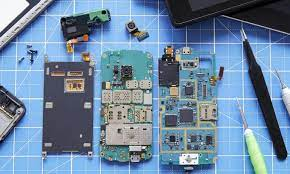Mobile phones have become the most important technological advancement since the Internet was established as a global network of communication in the 1990s. Since then, the world has changed dramatically.

Mobile phones have a unique set of materials that make them capable of being entertainment devices, communication tools, and personal organisers.
Plastic
Plastic does not occur naturally in the environment. Plastic is a by-product of crude oil processing.
Plastic is used primarily to make computer chip coatings and protective casings. It can also be used for electrical components.
Glass
This is not your ordinary glass. This glass is made of aluminium oxide and silicon dioxide, with a thin coating of indium-tin oxide to protect the screen.
Metals
Metals are used to make the circuitry of mobile phones and their batteries. When you also need a Multi Network Data Sim, visit Lister Communications, suppliers of Multi Network Data Sim products.

Lithium
It is a rare-earth metal that is lightweight and has a large electrical storage capacity. It is primarily used to produce mobile phone batteries. It is extracted from salt lakes and hard-rock ore.
Silicon
About 25% of materials are silicon. The main use of silicon is to manufacture the processor for mobile phones. Due to its unique semiconductor properties, silicon is used in the manufacture of mobile phones.
Copper
Copper is the most commonly used metal for mobile phone components, due to its excellent electrical and thermal conductivity. This material’s main use is in the cables of devices.
Copper is used in chips and printed circuits because it has excellent electrical conductivity. Heat sinks also use copper, due to its high heat dissipation.
